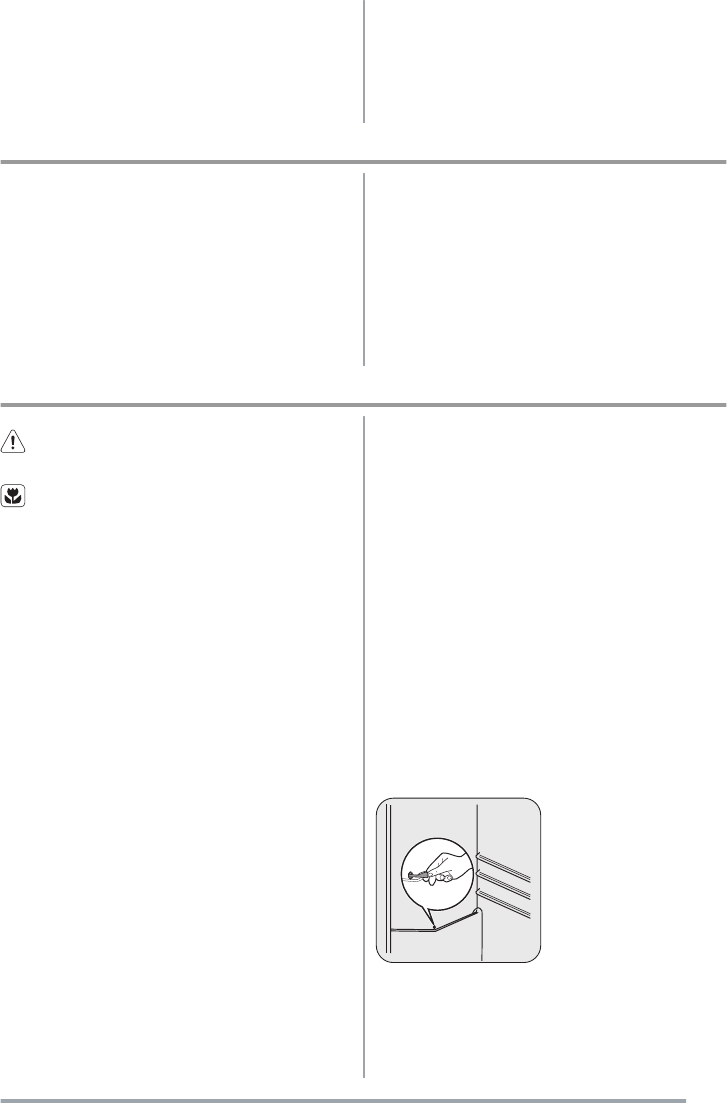
Thawing
Deep-frozen or frozen food, prior to being used, can be
thawed in the refrigerator compartment or at room tem-
perature, depending on the time available for this opera-
tion.
Small pieces may even be cooked still frozen, directly
from the freezer: in this case, cooking will take longer.
Helpful hints and tips
Normal Operating Sounds
• You may hear a faint gurgling and a bubbling sound
when the refrigerant is pumped through the coils or
tubing. This is correct.
• When the compressor is on, the refrigerant is being
pumped around and you will hear a whirring sound
and a pulsating noise from the compressor. This is
correct.
• The thermic dilatation might cause a sudden crack-
ing noise. It is natural, not dangerous physical phe-
nomenon. This is correct.
• When the compressor switches on or switches off,
you will hear a faint "click" of the temperature regula-
tor. This is correct.
Care and cleaning
Caution! Unplug the appliance before carrying
out any maintenance operation.
This appliance contains hydrocarbons in its cool-
ing unit; maintenance and recharging must there-
fore only be carried out by authorized technicians.
Periodic cleaning
The equipment has to be cleaned regularly:
• clean the inside and accessories with lukewarm wa-
ter and some neutral soap.
• regularly check the door seals and wipe clean to en-
sure they are clean and free from debris.
• rinse and dry thoroughly.
Important! Do not pull, move or damage any pipes and/
or cables inside the cabinet.
Never use detergents, abrasive powders, highly
perfumed cleaning products or wax polishes to clean
the interior as this will damage the surface and leave a
strong odour.
Clean the condenser (black grill) and the compressor at
the back of the appliance with a brush or a vacuum clean-
er. This operation will improve the performance of the
appliance and save electricity consumption.
Important! Take care of not to damage the cooling system.
Many proprietary kitchen surface cleaners contain chem-
icals that can attack/damage the plastics used in this ap-
pliance. For this reason it is recommended that the out-
er casing of this appliance is only cleaned with warm wa-
ter with a little washing-up liquid added.
After cleaning, reconnect the equipment to the mains
supply.
Defrosting of the refrigerator
Frost is automatically eliminated from the evaporator of
the refrigerator compartment every time the motor com-
pressor stops, during normal use. The defrost water
drains out through a trough into a special container at
the back of the appliance, over the motor compressor,
where it evaporates.
It is important to periodically clean the defrost water
drain hole in the middle of the refrigerator compartment
channel to prevent the water overflowing and dripping
onto the food inside. Use the special cleaner provided,
which you will find already inserted into the drain hole.
Defrosting of the freezer
The freezer compartment of this model, on the other
hand, is a "no frost" type. This means that there is no
5














